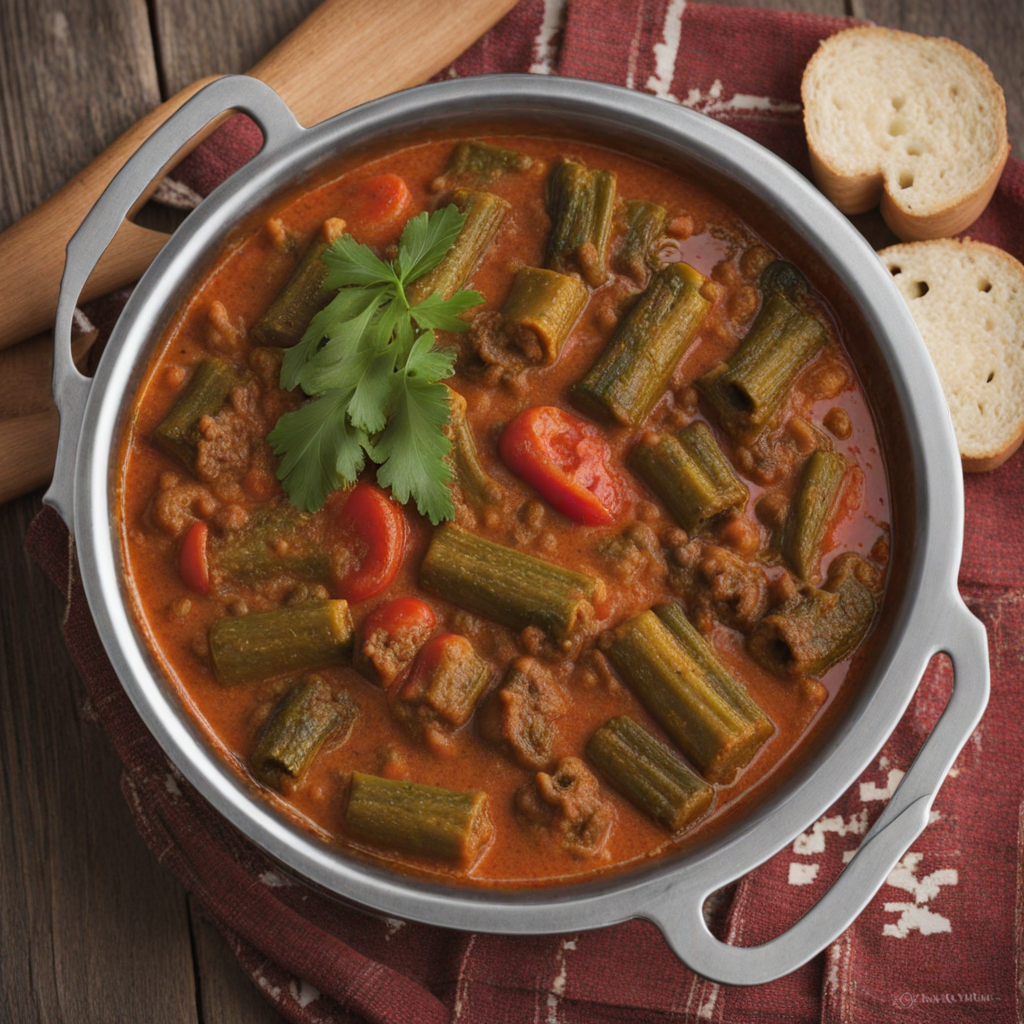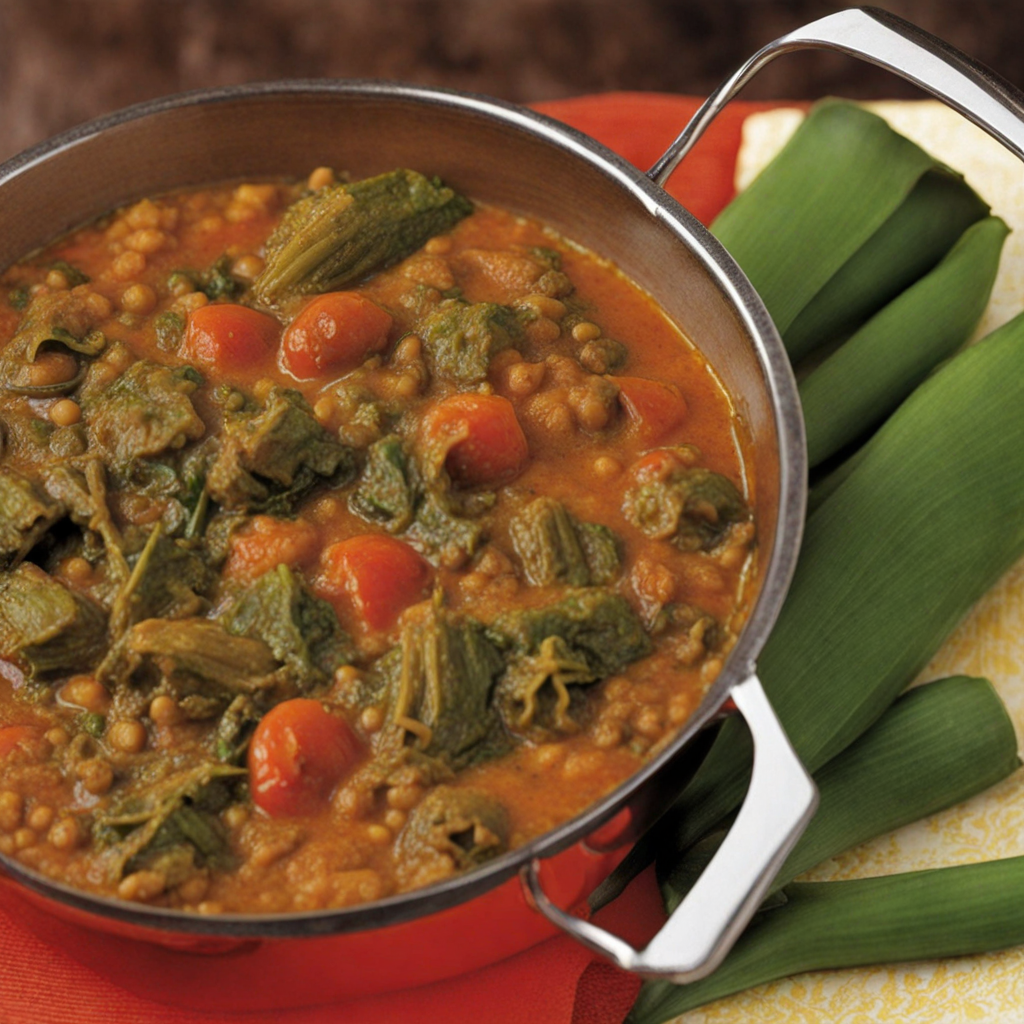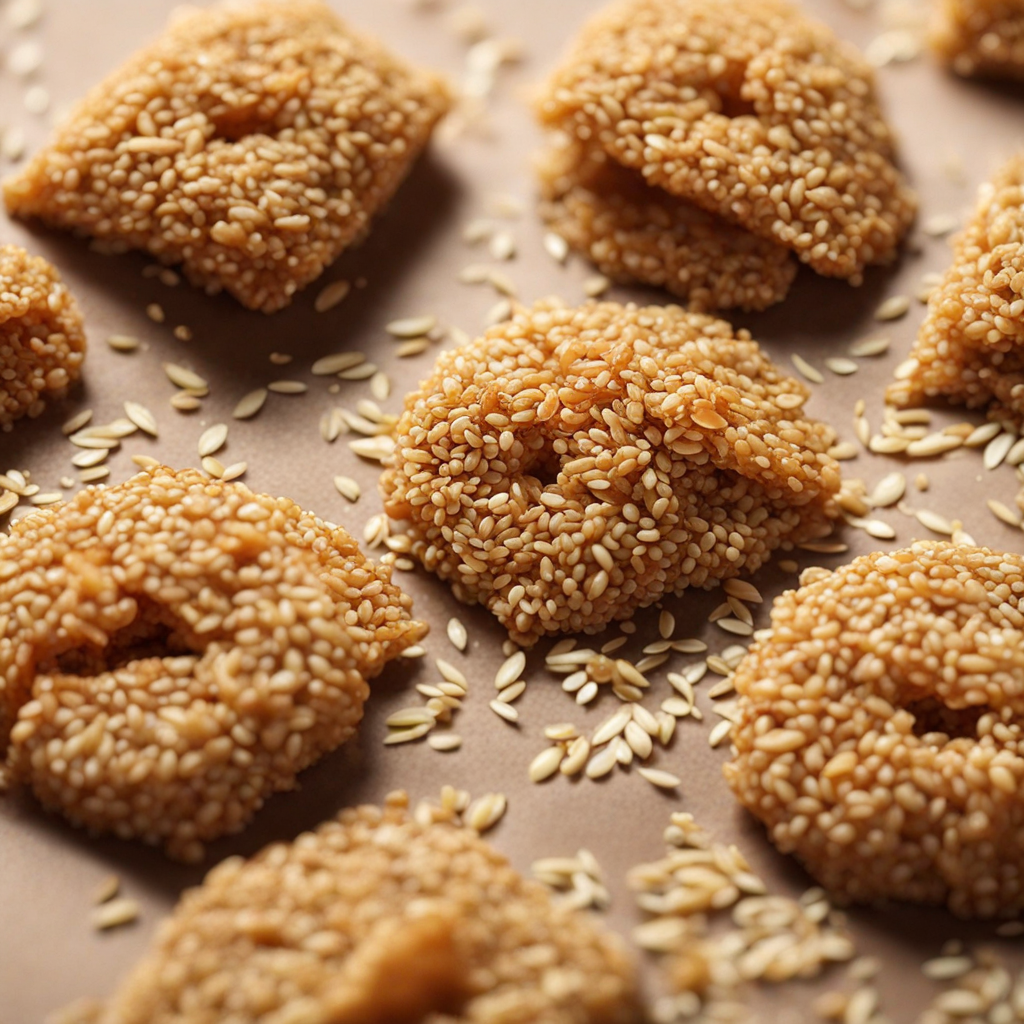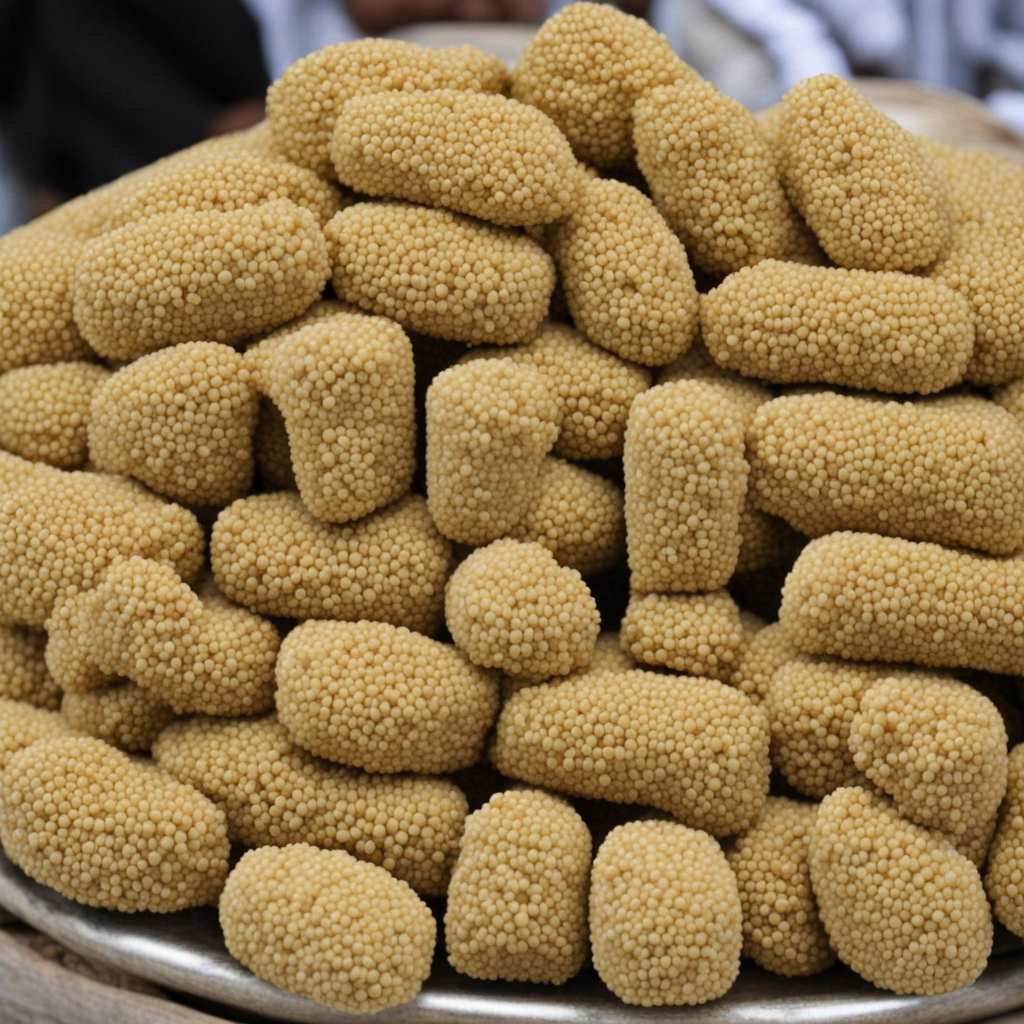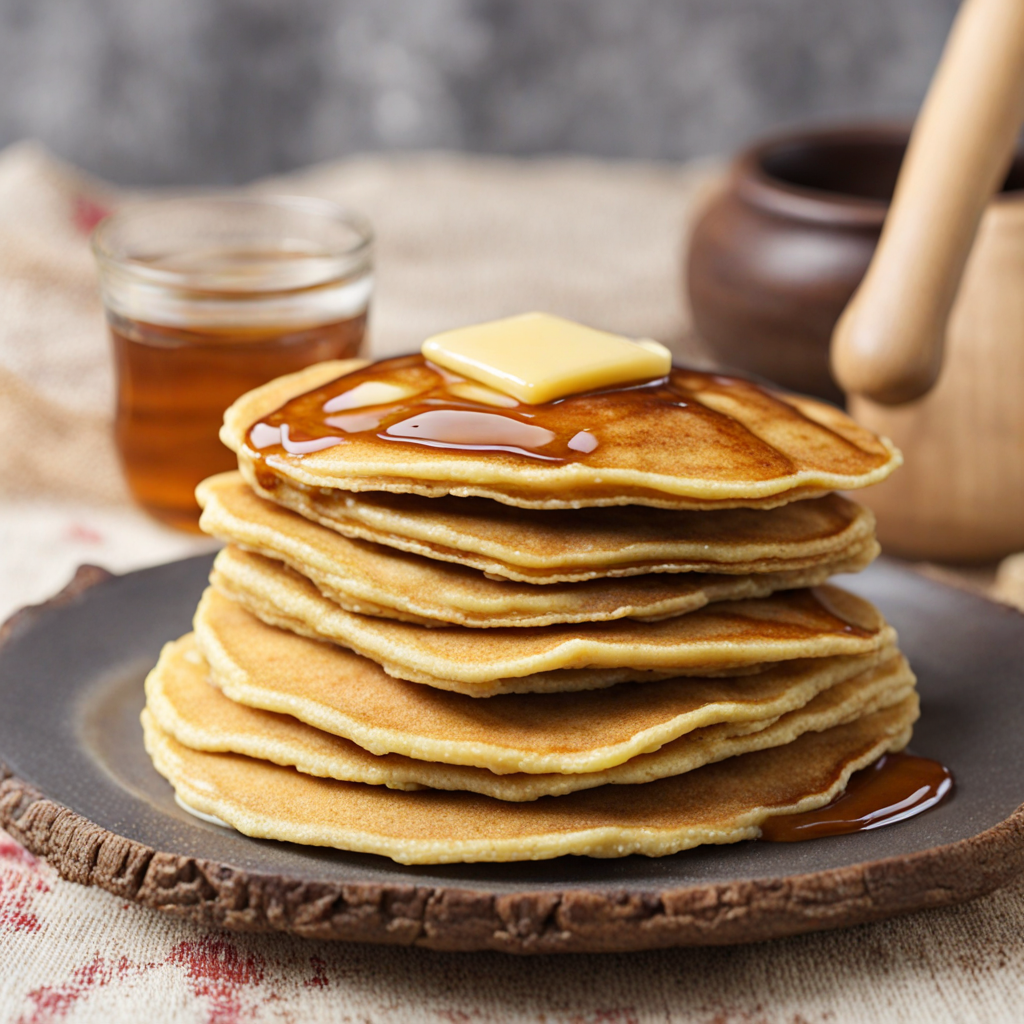Daraba
Daraba is a traditional dish from Chad that showcases the rich flavors and ingredients of Central African cuisine. It is primarily made with a base of millet or sorghum, which are staple grains in the region. The grains are usually ground into a fine flour and then mixed with water to create a smooth batter, which is steamed or boiled until it takes on a firm, yet fluffy texture. The result is a versatile starch that serves as an excellent accompaniment to a variety of flavorful stews and sauces, allowing it to absorb the delicious spices and juices that accompany it. The heart of Daraba lies in its accompanying sauces, often made from a blend of local vegetables such as okra, tomatoes, and peppers, combined with rich proteins like chicken, beef, or fish. These ingredients are simmered together with an array of spices, including ginger, garlic, and chili, creating a robust flavor profile that tantalizes the taste buds. The stew is typically served hot, allowing the vibrant colors and aromas to entice anyone who encounters it. Each bite of Daraba paired with the sauce delivers a harmonious balance of textures and flavors, making it a fulfilling and satisfying meal. In Chad, Daraba is not merely a dish but a communal experience, often enjoyed during family gatherings and celebrations. Traditionally, it is served on a large platter, where diners share from a central serving, using their hands to scoop the millet or sorghum and soak it in the delicious sauces. This practice fosters a sense of togetherness and connection, as friends and family come together to enjoy this hearty meal. Discovering Daraba allows one to appreciate the cultural significance behind the food and the warmth it brings to social gatherings, making it a delightful culinary adventure for anyone willing to explore the tastes of Chad.
How It Became This Dish
The History of درابا (Daraba) in Chad Introduction Daraba, a traditional dish from Chad, encapsulates the rich tapestry of the country's culinary heritage. This dish, which has become a symbol of the Chadian way of life, reflects the environmental conditions, agricultural practices, and cultural exchanges that have shaped Chad's society over centuries. This exploration of daraba's history delves into its origins, cultural significance, and development over time, illustrating how food serves as a conduit for cultural identity and communal bonding. Origins of Daraba The roots of daraba can be traced back to the diverse ecosystems of Chad, a landlocked country in north-central Africa characterized by its vast deserts, savannas, and the great Lake Chad. The dish is primarily made from a base of grains, often millet or sorghum, which are staple crops in the region. These grains are typically accompanied by a variety of vegetables, legumes, and meats, depending on the local availability and the season. Chad's agricultural practices evolved in response to its climatic conditions. The Sahelian zone where much of the population resides is marked by a semi-arid climate, influencing the types of crops that can be cultivated. The reliance on millet and sorghum can be traced back to ancient agricultural techniques that were developed by early Chadian communities, who adapted to the harsh realities of their environment. Such grains are not only nutritious but also drought-resistant, making them essential to the sustenance of the local population. Cultural Significance Daraba holds significant cultural importance in Chad, acting as more than just a meal; it is a communal experience that fosters social ties. Traditionally, the preparation and consumption of daraba involve the entire family or community. Cooking this dish is often a communal activity, where family members gather to prepare the ingredients, cook the meal, and share stories. This aspect underscores the communal values that are central to Chadian culture. In many households, daraba is prepared during significant occasions such as weddings, religious ceremonies, and festivals. The dish symbolizes hospitality, generosity, and the spirit of sharing that is deeply embedded in the Chadian way of life. When guests are welcomed with daraba, it signifies respect and appreciation, reinforcing social bonds and community ties. Moreover, daraba is a reflection of the diverse ethnic groups within Chad, including the Sara, Kanem-Bornu, and Arab communities. Each group has its version of daraba, incorporating local spices and cooking methods, which highlights the cultural amalgamation present in Chadian cuisine. The variations of daraba not only signify the local ingredients available but also the unique culinary traditions that each ethnic group brings to the table. Development Over Time The evolution of daraba over the years has been influenced by various factors, including colonialism, globalization, and economic changes. During the colonial period, French influence introduced new ingredients and cooking techniques to the Chadian diet. While traditional dishes remained at the core of the culinary landscape, elements of French cuisine began to intertwine with local practices. This blending can be seen in the use of certain spices and cooking methods that have been incorporated into the preparation of daraba. In contemporary times, globalization has further transformed the way daraba is perceived and prepared. Access to international markets has introduced new ingredients that were once rare or unavailable in Chad. For instance, the introduction of processed foods and imported spices has influenced the flavor profiles of traditional dishes, including daraba. While this has created an opportunity for innovation, it also raises concerns about the preservation of traditional foodways and the potential loss of cultural identity. Economic factors have also played a role in the development of daraba. As urbanization increases and people migrate to cities for better economic opportunities, traditional cooking practices are often altered. In urban settings, the time-consuming process of preparing daraba might be replaced by quicker, more convenient meals. However, this shift has sparked a revival of interest in traditional foods, as many young Chadians seek to reconnect with their heritage and preserve their culinary traditions. The rise of social media has further contributed to this revival. Platforms like Instagram and Facebook allow Chadians, especially the youth, to share their culinary practices and celebrate their heritage. This digital space has become a platform for showcasing traditional dishes like daraba, leading to a renewed appreciation and a quest for authenticity in food preparation. As a result, daraba is no longer just a dish served at home; it has become a cultural emblem that connects Chadians around the world. Modern Interpretations and Future Prospects Today, daraba continues to evolve while maintaining its traditional roots. Modern interpretations of the dish can be found in restaurants and food festivals that celebrate Chadian cuisine. Chefs are experimenting with daraba by incorporating international ingredients and modern cooking techniques, creating innovative versions that appeal to a broader audience. Despite these changes, the essence of daraba remains intact. It continues to be a dish that embodies the values of community, hospitality, and cultural pride. As Chad faces challenges such as climate change and food security, the significance of daraba may also evolve. It serves as a reminder of the importance of sustainable agricultural practices and the need to preserve traditional knowledge in cooking and farming. Conclusion The history of daraba in Chad is a testament to the resilience of a culture that has thrived amidst adversity. This dish not only nourishes the body but also nurtures the spirit of community and tradition. As it continues to develop in response to changing circumstances, daraba remains a powerful symbol of Chadian identity and a vital link to the past. In a world increasingly influenced by globalization, daraba stands as a reminder of the importance of food as a vessel for cultural heritage and communal togetherness. As we look to the future, the journey of daraba highlights the ongoing dialogue between tradition and innovation, ensuring that this cherished dish will continue to be a source of pride and connection for generations to come.
You may like
Discover local flavors from Chad


